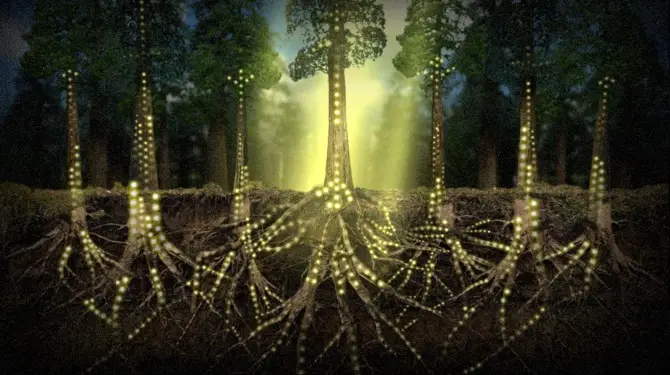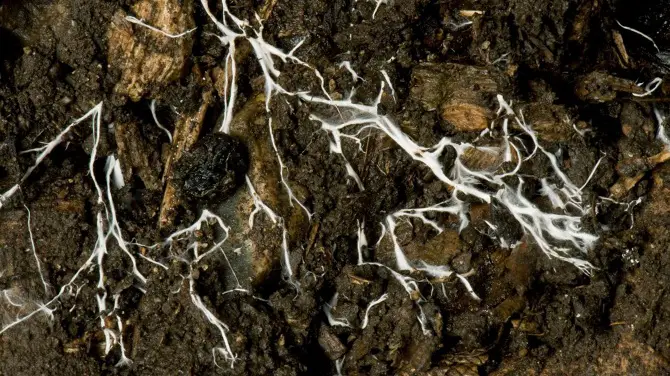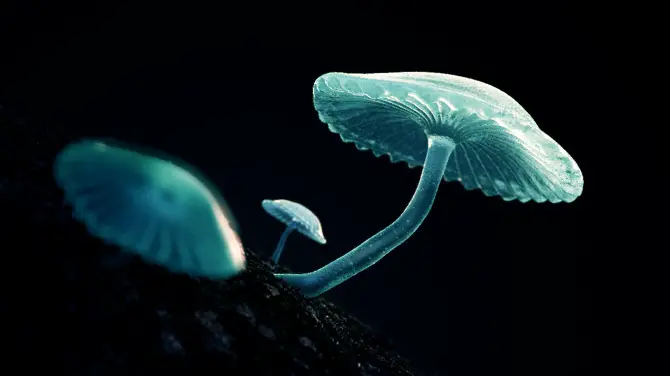Consciousness
Plants Communicate Using an Advanced ‘Bio-Internet’ Of Fungus

Hidden beneath our feet lies the entangled roots of many different plants and trees. These roots in addition to the help of some fungus create a super-highway of connection in its own unique bio-internet web. In fact, the researchers who study this connection call it the “wood wide web”.
This connection allows plants to talk to each other and it appears that this connection is also being used to share nutrition and to even harm each other. I know this sounds crazy, but plants have factions and even go to war over land and sunlight.
This advanced network is made possible by tiny threads of fungus called mycelium that grows out a few meters from the plant it is connected with other fungus plants.
The plants are then able to talk, partner up, and even warn each other about impending danger. If you step on a flower the bio-network will actually send out warning signals to all of the surrounding plants that danger is coming.
The fungi and plants have an awesome symbiotic relationship on more levels than just communication. The roots of the plant will provide food for the fungus in exchange for help with gathering water and nutrients. This awesome connection creates a way for the plant and the fungus to thrive, grow, and flourish.
Graduate Suzanne Simard from the University of British Columbia was the first to discover an incredible similarity between Paper birch and Douglas Firs. They were each able to transfer carbon to help out smaller trees who weren’t able to get enough sunlight. On some level, this is like a momma tree taking care of its babies.
Much of the world’s seedlings may not be able to survive if it wasn’t for their networked connection with the bigger trees. Which is incredible to think about, even plants need help from one another to survive and thrive.
Plants can warn each other against potential harm.
In a study from Ren Sen Zeng out of the South China Agricultural University, they found that the interconnection between plants allows them to warn each other about potential harm. The plants would warn each other about danger whether it was physical, a disease or something else.
David Johnson conducted another study at the University of Aberdeen where they found that plants will eavesdrop on each other as a way to watch out for possible threats. So plants will either warn each other or spy on each other in order to preserve themselves much like animals and even humans will.
When they get the warning about impending danger these plants will actually start excreting their chemical defenses and make efforts to protect themselves.
“Some form of signaling was going on between these plants about herbivory by aphids, and those signals were being transported through mycorrhizal mycelial networks.”
-David Johnson
Plants are Very Advanced and even have Problems Like War
Just like our internet plants connected to the fungus network are vulnerable to warfare, terrorism, and even cyber crimes. Plants like the Phantom Orchid actually don’t have enough chlorophyll for photosynthesis. In order for them to survive they have to leech the nutrients off of surrounding plants much like a vampire or mosquito.
American Black Walnut Trees and Golden Marigolds will release toxins in order to hinder other plants from growing nearby. That makes it so that they don’t have to compete for sunlight or water.
Another study suggests that some animals, worms and insects may be able to detect the subtle exchanges within the plant network which makes it easier for them to find roots to feed on. This means that there might be a sense that can detect and maybe even with the aid of future technology be able to tap into the bio-network of plants.
“These fungal networks make communication between plants, including those of different species, faster, and more effective. We don’t think about it because we can usually only see what is above ground. But most of the plants you can see are connected below ground, not directly through their roots but via their mycelial connections.”
-Kathryn Morris
Studying this incredible connection gives us valuable insight into our world in a way people haven’t thought of before. In fact, if you remember this information was introduced into the public’s awareness when the movie Avatar came out back in 2009.
Often, as humans, we connect better with things we understand. As we learn more about plants and nature it will be easier for people to defend natural habitats and preserve this world.
Check out this video below to learn more about the incredible bio-internet that connects live all over the world.
Sources-
Fleming, Nic. “Plants Talk to Each Other Using an Internet of Fungus.” BBC Earth. N.p., 11 Nov. 2014. Web. 19 Mar. 2015.
Harley, J. L., and J. S. Waid. “A Method of Studying Active Mycelia on Living Roots and Other Surfaces in the Soil.” Science direct. Department of Botany, University of Oxford, England, n.d. Web. 19 Mar. 2015.
Typos, corrections and/or news tips? Email us at Contact@TheMindUnleashed.com


